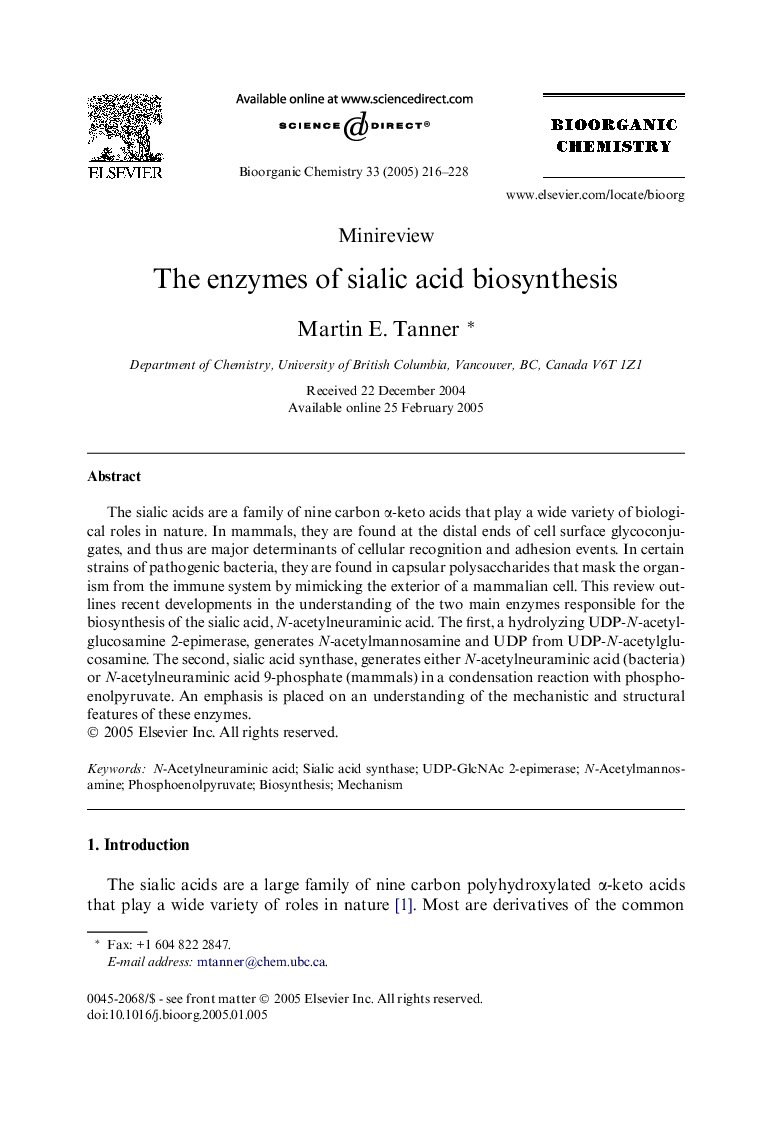| Article ID | Journal | Published Year | Pages | File Type |
|---|---|---|---|---|
| 10582215 | Bioorganic Chemistry | 2005 | 13 Pages |
Abstract
The sialic acids are a family of nine carbon α-keto acids that play a wide variety of biological roles in nature. In mammals, they are found at the distal ends of cell surface glycoconjugates, and thus are major determinants of cellular recognition and adhesion events. In certain strains of pathogenic bacteria, they are found in capsular polysaccharides that mask the organism from the immune system by mimicking the exterior of a mammalian cell. This review outlines recent developments in the understanding of the two main enzymes responsible for the biosynthesis of the sialic acid, N-acetylneuraminic acid. The first, a hydrolyzing UDP-N-acetylglucosamine 2-epimerase, generates N-acetylmannosamine and UDP from UDP-N-acetylglucosamine. The second, sialic acid synthase, generates either N-acetylneuraminic acid (bacteria) or N-acetylneuraminic acid 9-phosphate (mammals) in a condensation reaction with phosphoenolpyruvate. An emphasis is placed on an understanding of the mechanistic and structural features of these enzymes.
Related Topics
Physical Sciences and Engineering
Chemistry
Organic Chemistry
Authors
Martin E. Tanner,
